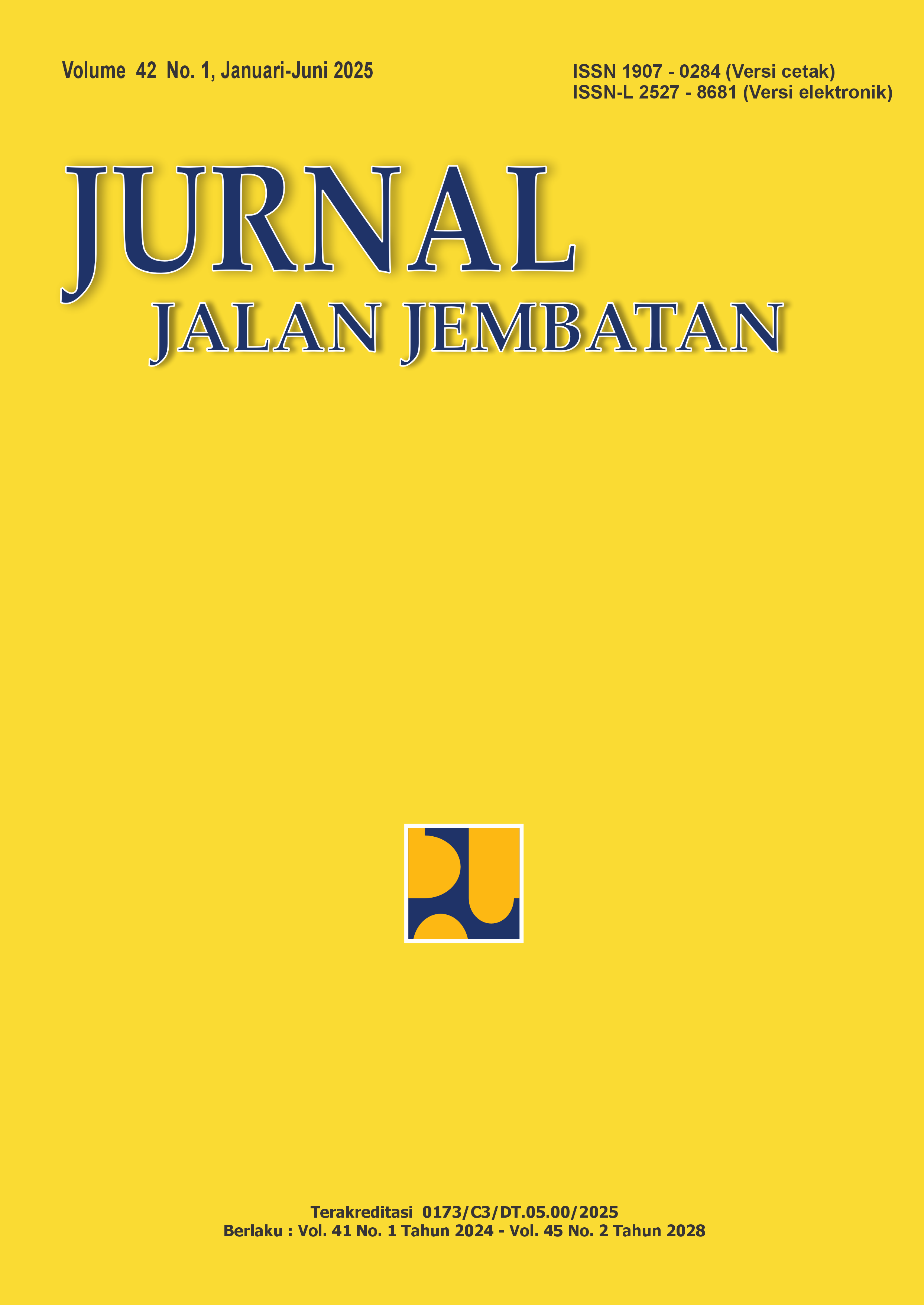ANALISIS POTENSI LIKUEFAKSI PASIR PANTAI ANYER SEBAGAI SUBGRADE JALAN YANG DISTABILISASI DENGAN BAKTERI SPOROSARCINA SP
Main Article Content
Abstract
Earthquakes are natural disasters that can cause significant damage to infrastructure, particularly the subgrade layer, and induce secondary effects such as liquefaction. This impact phenomenon is indicated by loose soil material, such as sand, losing its strength and exhibiting a fluid-like behaviour due to specific shocks or pressures. As a result, the soil becomes unstable so that it is unable to support the load above it. The use of loose sand as a subgrade requires repair or replacement with stronger, more stable soil, which can be addressed with the proper stabilisation method. Currently, a more environmentally friendly soil stabilisation method has been found, known as bio-grouting or MICP (Microbially Induced Calcite Precipitation). This study was conducted to develop and apply Sporosarcina Sp bacteria on Anyer beach sand with four methods, including A (injection, 10 ml of bacteria), A1 (soaking, 10 ml of bacteria), B (injection, 100 ml of bacteria), and C (injection, only nutrients). The results of soil stabilisation using four methods in a 14-day incubation period can increase the CBR value of the soil by more than 40% compared to the initial condition. The CBR value of the soil, which was originally around 2.25%, became 3.156% (method A), 3.016% (method A1), and 3.367% (method B). The increase in the SF value, which was previously around 0.20-0.21, was shown after stabilisation, and the SF value was obtained with a range of 2-5.6 in methods A, A1, and B. This value has increased significantly and can reduce the potential for liquefaction in sand as a road subgrade with a depth range of 0-1 m, as shown at the research location.
Kata Kunci: gempa bumi, likuefaksi, tanah pasir pantai, Sporosarcina Sp, subgrade
Keywords: earthquake, liquefaction, coastal sandy soil, Sporosarcina Sp, subgrade
Article Details

This work is licensed under a Creative Commons Attribution-NonCommercial-ShareAlike 4.0 International License.
Authors who publish in this journal agree to the following terms:
-
Authors retain copyright and grant the journal the right of first publication with the work simultaneously licensed under a Creative Commons Attribution License, which allows others to share the work with acknowledgment of the work's authorship and initial publication in this journal.
-
Authors may enter into additional contractual arrangements for the non-exclusive distribution of the journal's published version of the work (e.g., post it to an institutional repository or publish it in a book), with acknowledgment of its initial publication in this journal.
-
Authors are permitted and encouraged to post their work online (e.g., in institutional repositories or on their website) as it can lead to productive exchanges, as well as earlier and greater citation of the published work.
Each submitted manuscript must be accompanied by a "Manuscript Originality Statement" and a "Copyright Transfer Statement".

